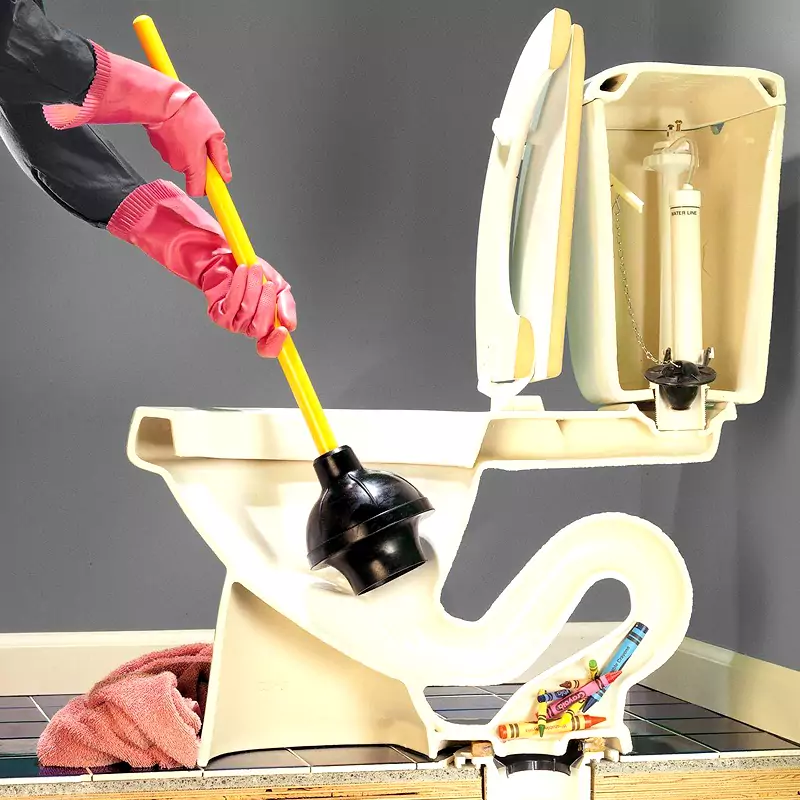If you have experienced a clogged toilet, then you probably know that sometimes solving the problem is not so easy. Sometimes you have to use several methods to finally get rid of blockages. We will tell you the best way to unclog a toilet, and also explore different ways to solve the problem using chemicals and additional equipment. In addition, we will give tips on how to avoid such an unpleasant situation in the future.
How to determine the location of the blockage
There can be many reasons for a clogged pipe. This could be a stuck solid object, accumulated debris, or poor-quality water. How to correctly determine the location of the traffic jam?
To correctly determine the location of the blockage, turn on the water in the bathroom and kitchen taps at the same time; if, after increasing the pressure, the water still does not go away, then it is the toilet drain that is clogged. Sometimes the problem can be solved solely with the help of chemicals that will destroy the accumulated waste, otherwise the problem can only be solved with the help of a plumbing cable.
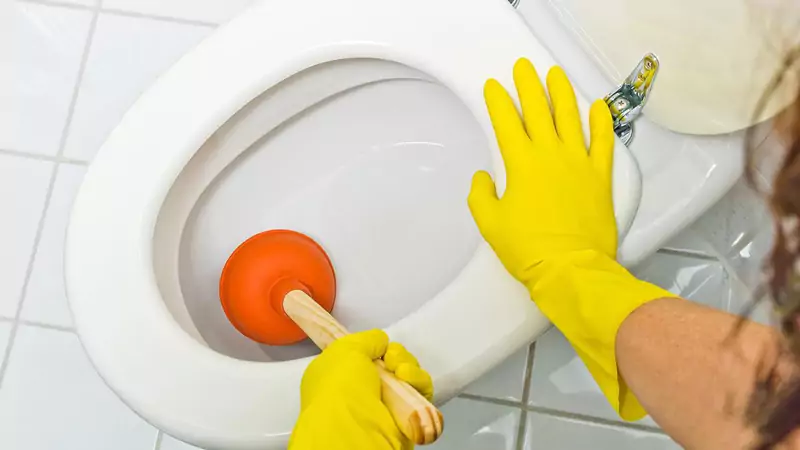
The volume of water that a clogged toilet can hold is limited, so consider in advance whether water will flow if you empty the flush tank. It is best to turn off the water in advance, and only then clean the tank.
To control the flow of water, use a regular bucket. Try pouring a small amount of water into the toilet and watch how it goes away.
How to clean a toilet with chemicals
The easiest way to clean a toilet is with chemicals. They are sold in abundance at any plumbing store and even in the supermarket.
“Bio Favorite” and “Biocomposition Ventuz”
“Bio Favorit” is a good assistant in the fight against blockages. It is used to decompose various waste and debris. It is more advisable to use this option when cleaning cesspools, country toilets, and septic tanks.
“Mole” and “Mr. Muscle”
“Mole” is one of the most popular pipe cleaning products. It copes well with blockages, among the disadvantages it contains alkali and the action time is quite long.
Methods of cleaning with folk remedies
Sometimes, if the blockage is small, you can use simple folk methods. Using substances such as baking soda, salt, vinegar, or more concentrated acetic acid can effectively break through blockages. In this situation, ordinary detergents and substances that can be found in any housewife’s kitchen will help.
Boiling water or lye
The simplest blockage can be destroyed using regular boiling water. Pour boiling water into the toilet and watch the effect. You can add a small amount of food alkali.
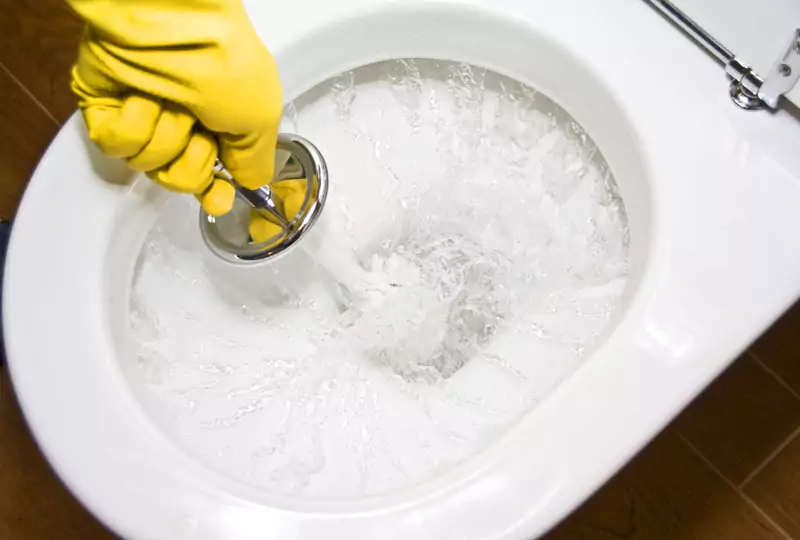
Baking soda and salt or vinegar
Baking soda is one of the easiest options to help deal with blockages. There are several options for cleaning drains using regular baking soda. Dissolve half a pack of soda in a regular bucket of warm water. Typically, this solution is poured into the toilet overnight or left for at least 3 hours.
Pepsi and cola or mustard
Sometimes housewives use rather unusual and very expensive methods of cleaning pipes. For example, pouring regular Coca-Cola down the drain. However, we do not recommend using such means, since their effect is insignificant, but the costs are enormous. Some housewives use mustard powder as an emergency way to clear small blockages.
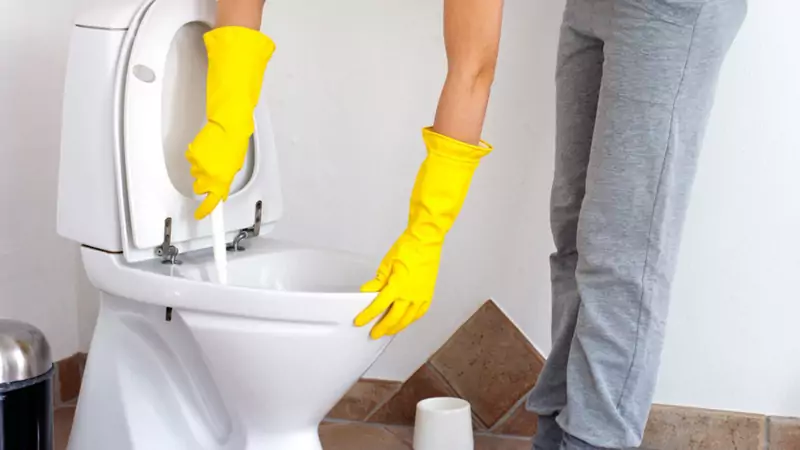
Mechanical Cleaning Methods
Now there are a large number of different methods for cleaning plumbing, from piston to electric. Before using this method, you must either pump the water out of the toilet bowl or push it inside using a regular toilet brush. Sometimes you can soak up excess waste and water using old rags.
Traditional plungers and more advanced models
A plunger is one of the easiest ways to deal with a small clog. It can be used as an auxiliary option after chemical cleaning. Using a plunger, a stream of air is pumped into the area of the blockage, and by pumping the blockage can dissolve. The plunger is effective in the first stages of blockage.
Mechanical cleaning methods
Now there are a large number of different methods for cleaning plumbing, from piston to electric. Before using this method, you must either pump the water out of the toilet bowl or push it inside using a regular toilet brush. Sometimes you can soak up excess waste and water using old rags.
Traditional plunger and more advanced models
A plunger is one of the easiest ways to deal with a small clog. It can be used as an auxiliary option after chemical cleaning. Using a plunger, a stream of air is pumped into the area of the blockage, and by pumping the blockage can dissolve. The plunger is effective in the first stages of blockage.
Plumbing cable
If the blockage does not go away after chemical cleaning, then it is likely that a hard lump has accumulated in the drain. In this case, the most effective way to clear the blockage is to use a special plumbing cable.
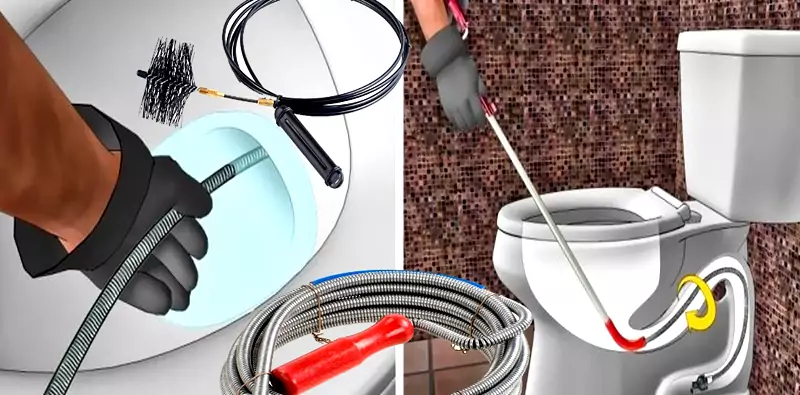
Preventive measures against blockages
To avoid blockages, be sure to read our recommendations.
Let’s list some of them, remember these simple rules:
- The idea that toilet paper completely dissolves in the toilet is wrong!
- Cat litter should never be poured into the toilet. There are a lot of fillers that, when wet, turn into a mass similar to clay, which helps to instantly clog the toilet.
- Do not throw feminine hygiene products or contraceptives down the toilet.
